Mattia Morandi, head of the Ministry of Culture’s Press and Communications Office since 2014 (except for the interlude during the Conte I government), is the main architect of the ministry’s social and digital transformation. Under his impetus, major campaigns to promote and enhance the institutes of culture have come into being, the Comics in Museums project has started, and the MiC has taken on a much more familiar face to the tens of thousands of people who frequent museums, archives, libraries, archaeological and monumental sites. In what ways has it been working in recent times? We had it all explained in this interview edited by Federico Giannini.
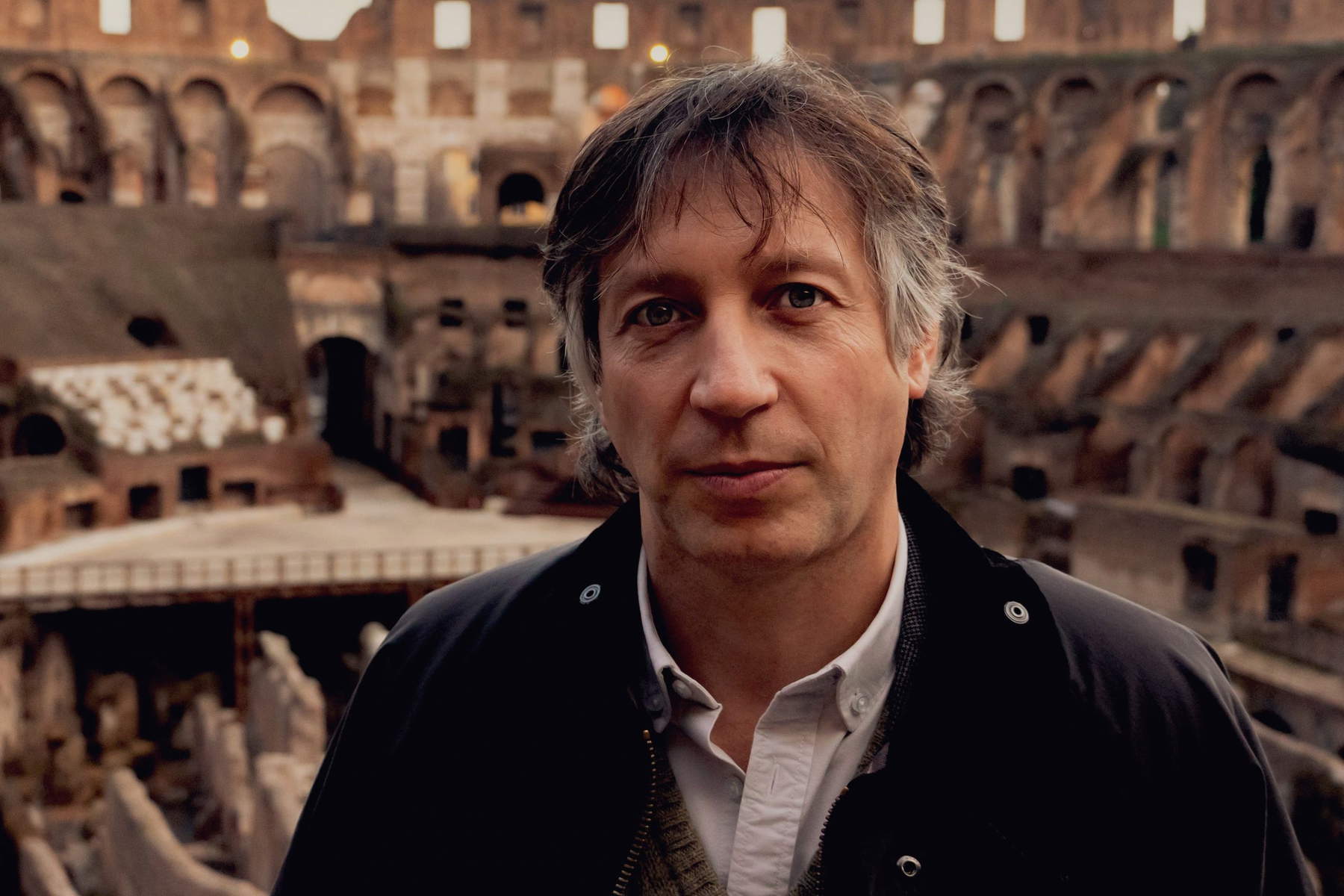
The Ministry of Culture has distinguished itself in recent years for its many social and digital campaigns (e.g. ,Libraries of Italy, Fantastic Animals in Museums, Artist’s Afterthoughts, Culture Unites the World, Journey to Italy, and so many others). What was the strategy that guided conception and implementation?
First, it is necessary to distinguish three main moments: pre-Covid, pandemic, and post-pandemic. Before the health emergency disrupted our lives, however, we had already started a significant strengthening of digital communication: new profiles, more content and, above all, more care for the graphic and aesthetic aspect as well as, of course, the content aspect. Then came the pandemic, which was a kind of accelerator. During the health emergency, in addition to carrying on the initiatives that were already born properly for the web, we were faced with the need to transport (quickly) to digital many activities planned by the MiC institutes that could no longer be carried out in presence. As a press office, we took on a role of coordinating and supporting processes geared primarily toward digitizing these events and initiatives, partly because not all institutes had the necessary professional skills. This resulted in a real in-house communications team within the Ministry, with graphic designers, videomakers and copywriters coordinated by creatives and figures closer to so-called project management. It was a quantum leap: now (and for a few years now) the production of digital content and the management of the many social pages is all administered in-house, from the conception and definition of the strategy through the implementation and programming of editorial plans.
Can you explain in more detail what this has meant during the pandemic period?
Having strengthened the Press Office and having extended activities to the broader field of communication made it possible to respond in a timely manner to the needs of the more than 400 peripheral institutes of the Ministry. In addition, thanks to the coordination of professional figures from museums, archives, libraries, superintendencies, directorates general and places of culture, we were able to sort through the large amount of content produced every day and design system-wide campaigns. By triggering this virtuous circle, we encouraged and supported our institutions to produce content themselves, and it was important to have involved precisely all of them. This led to the strengthening of the network of communicators that already existed, and which, strengthened by the lockdown experience, continued to live on thanks to the good practices developed during those two difficult years. Every phenomenon then has its natural evolution. That is why, in the post-pandemic phase, we decided to leave room for the autonomous initiative of individual institutions, proposing campaigns that, starting from a single theme, lent themselves to be customized by each individual institution. Even now, having overcome the health emergency, the main goal of the campaigns does not change: to bring people closer to the extraordinary cultural heritage of our country with every possible tool, and social media are now almost indispensable.
What were the main requirements that moved the design of the Ministry’s communication campaigns?
Meanwhile, as I was saying, the experience of the two lockdowns created a bit of a disconnect, because the places of culture were closed and felt to be unsafe. We had (and still have) the task of reversing this misperception. The many campaigns that we still have are aimed precisely at conveying the sense of safety that is experienced in places of culture and thus to bring back the desire to visit, to see, to learn. I think in some ways this is already happening: audiences are rapidly returning to pre-pandemic numbers, and the museum figures in recent weeks are very positive. A new feature of the last few months is certainly the emphasis we have placed on libraries: there are several campaigns now with which we tell people about the richness of the library heritage, and these too have as their main goal to convey a sense of security. Then there is the recent campaign entitled In volo on Italian archaeology and beauty: we commissioned a young filmmaker and dronist, Nils Astrologo, who traveled around Italy in a van throughout the summer to shoot aerial footage of thirty cultural sites, mainly outdoor archaeological areas. Another key aspect during these years has been the timely communication of all the measures the ministry has put in place to counter the negative effects of the pandemic on the cultural sectors. It has been an intense but fundamental work to provide clear and correct information about the refreshments and the many supports launched by the Ministry.
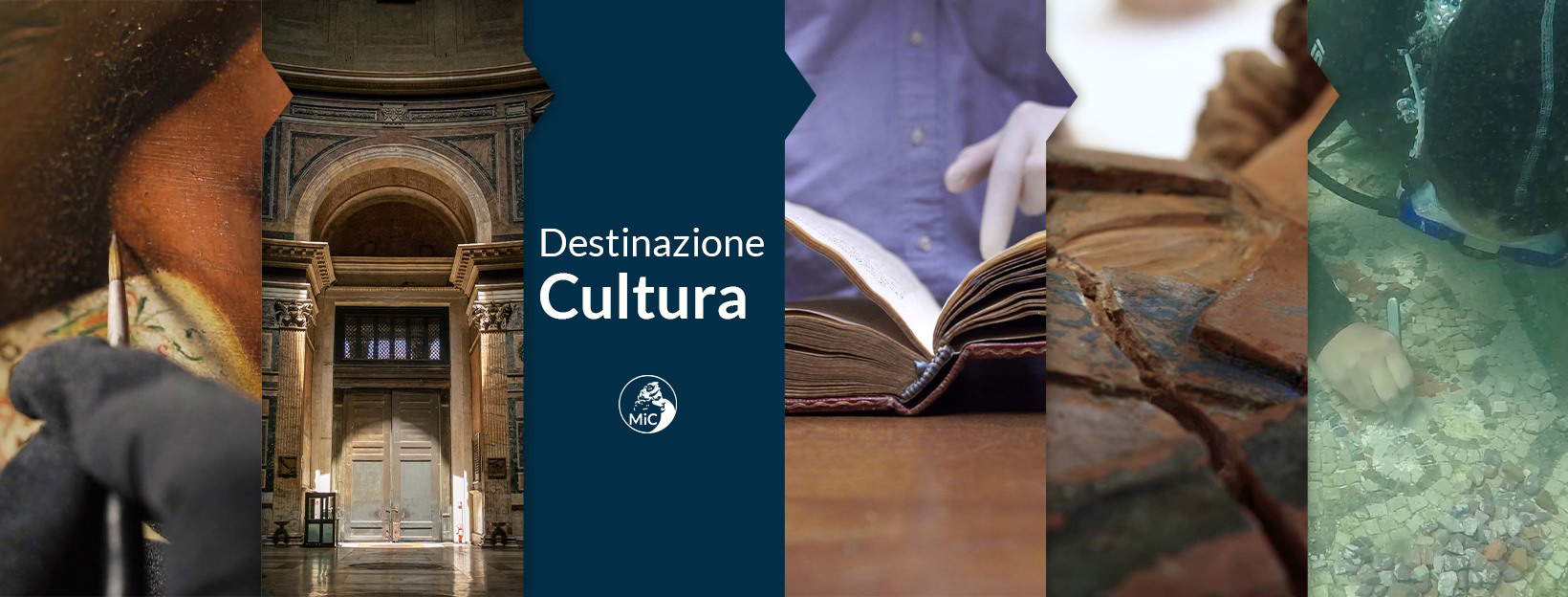

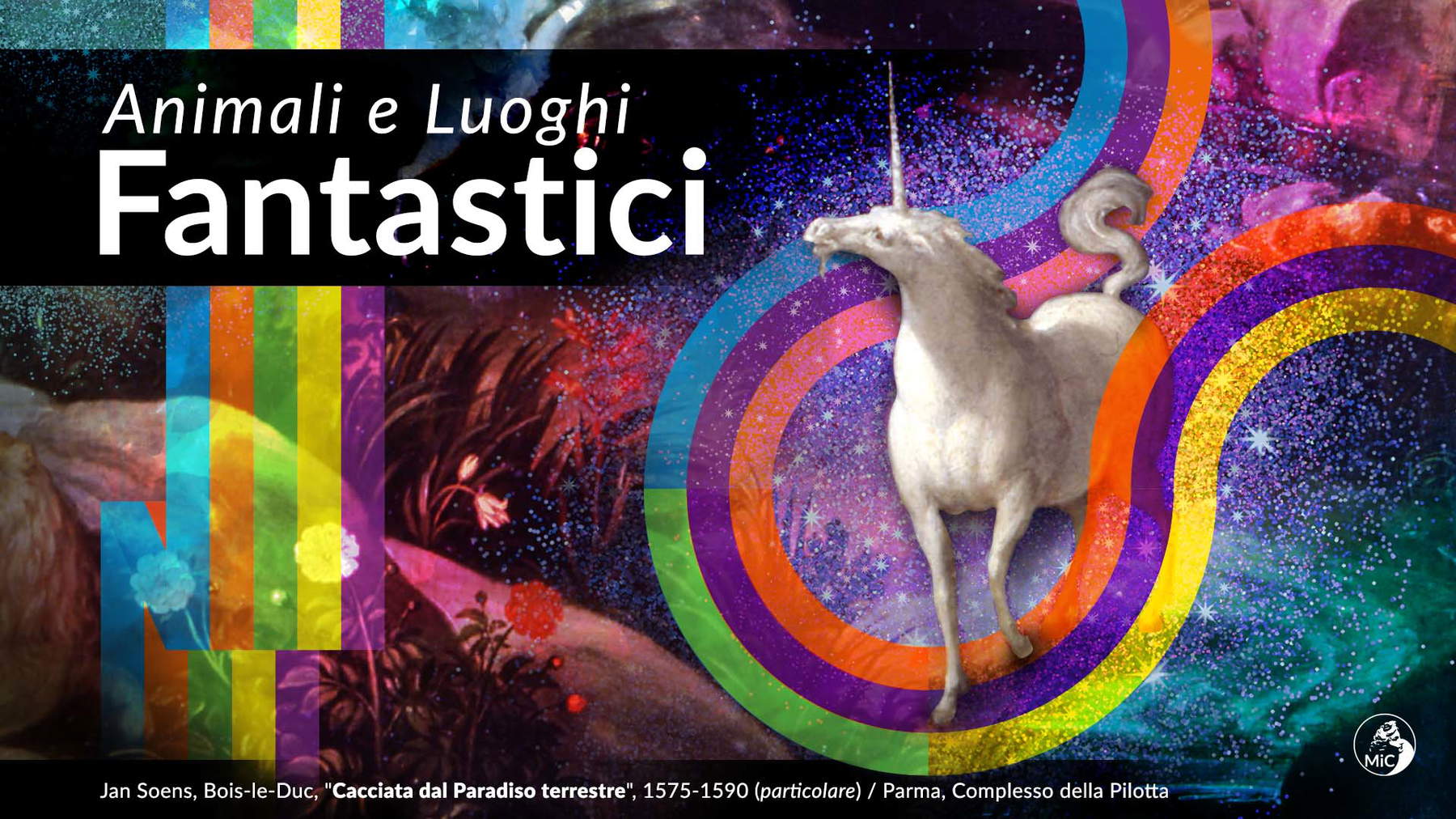
These campaigns naturally require close and synergistic work with the institutions that are involved. I would like to know how the collaboration with museums, libraries, archives, and those involved in the campaigns that are designed centrally takes place.
The way of working that I’ve built over the years builds on a network of communication promoters (that’s what they’re called according to the Ministry’s organizational chart) of cultural institutions. We have Telegram channels where we exchange information and where we share materials and content related to national campaigns that we design centrally or of which we devise graphics and texts. So each individual institution is directly involved: we ask each of them to interpret the proposed themes according to their own sensibility. I like to think of our office as a conductor on the one hand, and an accelerator of ideas and messages on the other, without compromising the inevitable differentiation and variety of languages inherent in a composite environment. What is primarily important to us is that there be order and clarity in the digital environment, and the customizable open graphics we provide serve to do just that: communicate the same message while preserving differences.
What, on the other hand, do you think are the most interesting and most obvious results that have been achieved by this enhancement activity on digital, also in light of the fact that the Ministry has never been as “social” as it has been in recent years (although it should be emphasized that the Ministry has already been relying heavily on social campaigns for years, though all the more so during and after the pandemic)?
Let’s start with an important premise: When I arrived in 2014, the digital presence was left to individual insights and, more specifically, to a few people within the institutions who had greater sensitivity to these issues. It was, however, not a structured presence at all; the institutes’ profiles were created by individuals without coordination, and it was often difficult even for us to understand whether a particular social profile was really official or not. So the first activity we put in place was to sort and even certify the profiles with the “blue checkmark.” This was meticulous, time-consuming, but crucial work, because in the chaos, scams and illegitimate transactions were also taking place, with increased ticket sales, perhaps with the catch of a fake “skip the line.” Having worked to reduce these forms of deception to users was an important achievement. I’m also thinking of what happened with 18app, the €500 bonus for new 18-year-olds, where in collaboration with the Guardia di Finanza we managed to limit fraud by reporting numerous operations that harmed young people. In terms of publishing plans, the amount of content published has increased enormously over the years, not only centrally, but also by museums, archives, and libraries. Even institutions that were initially more skeptical of social communication are now active and present. Recently, with the outbreak of war, we launched the #CultureUnitesTheWorld campaign, which, thanks to this dense network of communicators, has spread widely and gained strong international attention: many other museums around the world have followed and replicated us. It was an honor for me to receive the Areté award for best institutional communication just for this specific communication campaign.

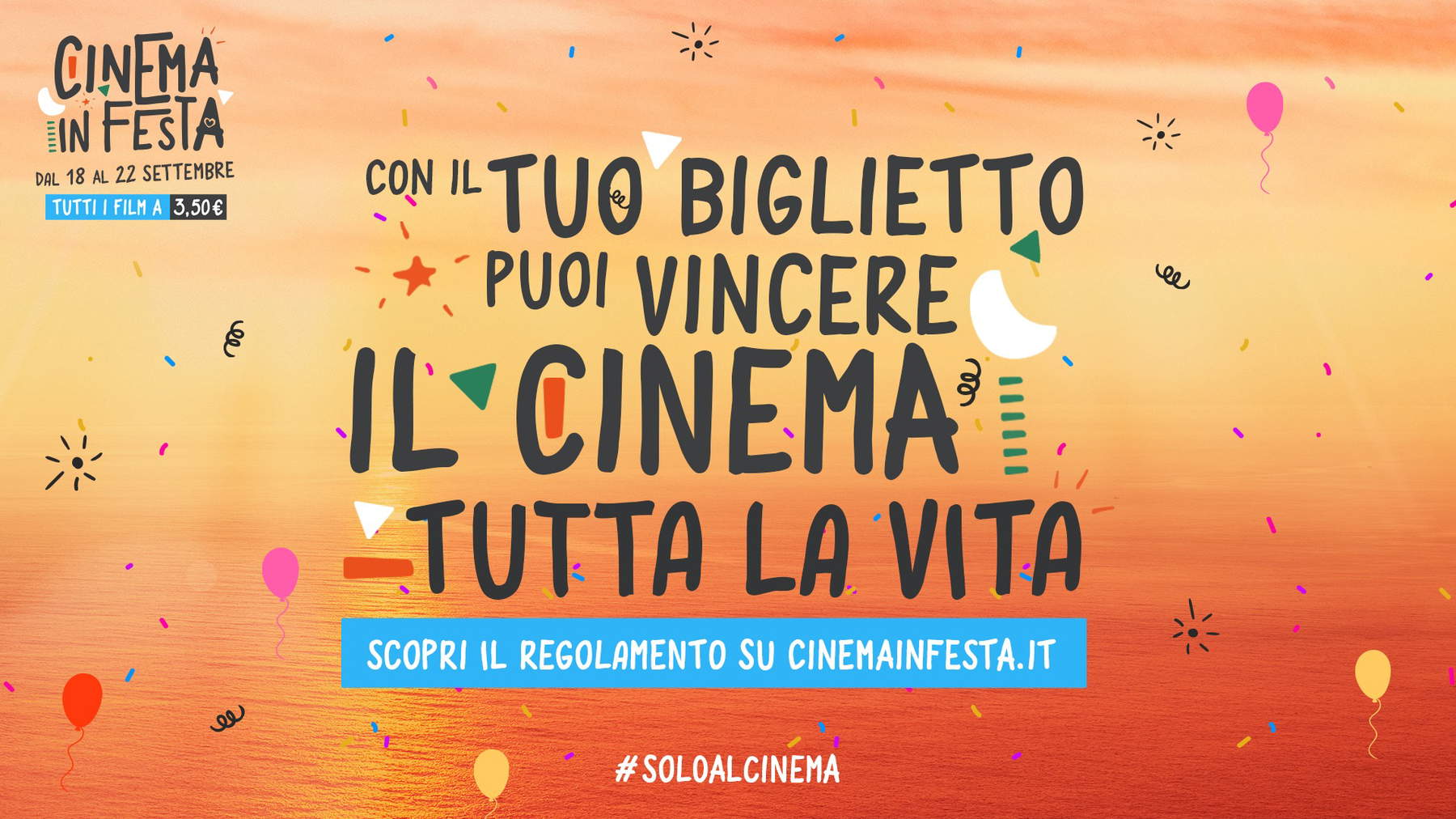

The campaign that bears your signature more than any other is Comics in Museums, to which you are very attached. I would like to ask you how you came up with the idea of telling the story of museums through comics, something that is not really so obvious or immediate.
Yes, it is probably the project I have been most dedicated to, also because of the many positive developments it has had over the years. The project took off in 2017 after receiving some negative data on the relationship between museums and new generations. It emerged, in fact, that at the end of compulsory schooling, children stop attending museums for quite a long period of their lives. They visit them on school trips, but after those are over there is an abrupt interruption. It is as if something very similar happened for museums to what happens with reading. Think for example of the great classics of literature, which, precisely because they are central to school curricula, are often experienced by children as an imposition and not as a pleasure. A “tool” was needed to tell about museums in a different language. My attention immediately turned to comics, partly out of personal passion, partly because of the many experiences that characterized Europe in those years. The ambition was high: not just to cover a few large entities, but to involve a large number of museums. We started with the first 20 autonomous ones of the Franceschini reform, the most important ones in the National Museum System, and then expanded to lesser-known realities. We have arrived at 51 stories set in as many museums, and now a third edition is underway that will include 17 more. Comics in Museums has become to all intents and purposes an educational project of the Ministry of Culture, and it is no coincidence that the series has been ’certified’ by the SED, the structure that for the MiC is in charge of overseeing the quality of educational offerings.
Moreover, the project has achieved remarkable results.
Yes, from the very beginning we received appreciation from those involved in the field, and this was mainly due to the excellent work of the Coconino Press-Fandango publishing house with which we collaborated for the realization and to which we gave full editorial autonomy. Fumetti nei Musei is now to a full-fledged series, so much so that it won the Gran Guinigi Award for best publishing initiative at the 2018 Lucca Comics & Games. And I was inundated with emails from collectors who, owning all the albums of an author or author featured in the collection, asked me to make a break from the rule-that of giving the volumes only to children and young people participating in museum visits with schools-and be allowed to buy the comics. We then began to reflect on the fact that limiting the project to only free distribution in museums did not do justice to the beauty of these short but dense works, and so thanks to the support of Ales S.p.A we entered into a commercial agreement with the publishing house Coconino Press - Fandango, whereby the comics are now also sold and a share of the sale is retained in favor of reprinting the free copies for museum workshops.
What are the project developments you mentioned earlier?
The list is long. There have been several exhibitions starting with the first ones held at the Central Institute of Graphics in Rome, at the Shrine of Hercules the Victor at Villa D’Este in Tivoli, at the Royal Museums in Turin, at Lucca Comics & Games, and at the museum in Tunis. The project was also selected by the Ministry of Foreign Affairs as part of the Week of the Italian Language in the World. On that occasion, we produced an extraordinary print run that was distributed to the libraries of Italian Cultural Institutes, Embassies, Consulates and Italian Schools to promote our language, enhance its vitality and to show the strength of the art of Italian comics. For the quantity and quality of the artists involved and for the many styles and genres, these albums in fact represent a small atlas of contemporary Italian comics. A further evolution has been the web series of interviews with comics professionals: writers, illustrators, scriptwriters, translators, which has become a stand-alone audiovisual product. The seven episodes of “I mestieri del Fumetto” directed by Fulvio Risuleo are online on RaiPlay and on the institutional channels of the Ministry and @fumettineimusei. In October this year there will also be an important meeting on the educational activities of museums at the Fondazione Morra Greco in Naples entitled EDI Global Forum, in which Fumetti nei Musei will be presented to participants as an Italian best practice. The same thing happened a few days ago when we presented the project at the European Comics Center in Brussels as part of a conference on the use of comics as a tool for the promotion and enhancement of museums, which took its basis precisely from our project. In addition, on the occasion of the exhibitions held in Rome, we asked the authors to donate their boards to the state. They all did so, showing great generosity, and thanks to these donations, the Institute for Graphics was able to create a “Comics Fund,” the first of the State’s heritage. Finally, we asked the authors to self-report. The works, which we exhibited last year in Lucca, were donated to the Uffizi Galleries to become part of the most prestigious collection of self-portraits in the world.
Do you feel satisfied?
Very, because we brought the “ninth art” inside cultural institutions, contributing to eliminating the perspective that sees comics as a minor art form or at least dedicated only to kids and children. I think this constant attention has helped to shorten the distance between the world of comics and major cultural institutions. Finally, at the impetus of the General Directorate for Contemporary Creativity MiC, a call for proposals was created to fund various activities of institutions in the area that are active in the field and comic book festivals. And the General Directorate for Libraries has also set up tables with professionals in the sector to map the state’s comic book heritage and identify the main needs of the entire supply chain: from publishers to cartoonists.
In relation to the fact that comics have often been perceived as an art form of inferior status, has there been any resistance on the part of the institutions involved, for example, or wrinkling of noses at the idea of having to entrust the communication of heritage to a medium that so many, precisely, perhaps do not see as surrounded by the courtly aura that heritage enhancement is often wrongly believed to have to have?
I would say no, not least because we have not proposed it as a substitute for traditional enhancement activities. We presented it as an additional tool. It is true, however, that there has been a progressive recognition of the strength of the project. Comics in Museums has always touched the sensibilities of the directors, also because the only request we had made to the publishing house was that the authors spend a day at the museum with them and with art historians, restorers, curators. This is what ignited the creative spark, giving room for curiosity and unknown aspects, as well as imagination. Many stories were born precisely because of those encounters.
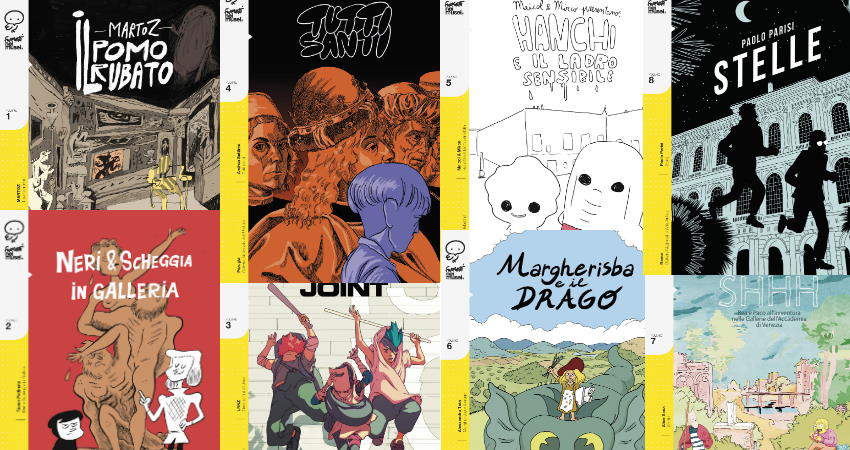
 Comics in
Comics in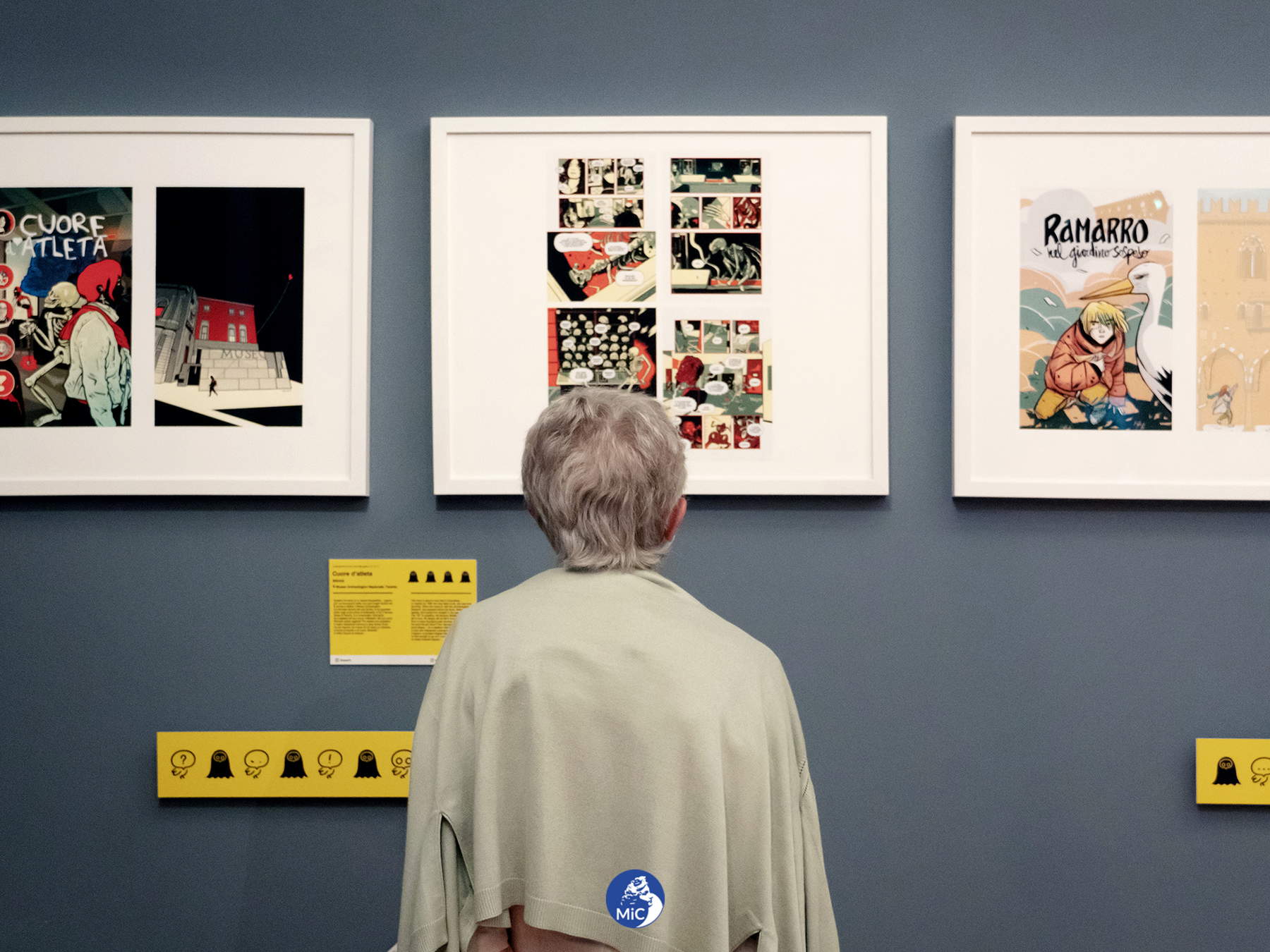 Comics in
Comics in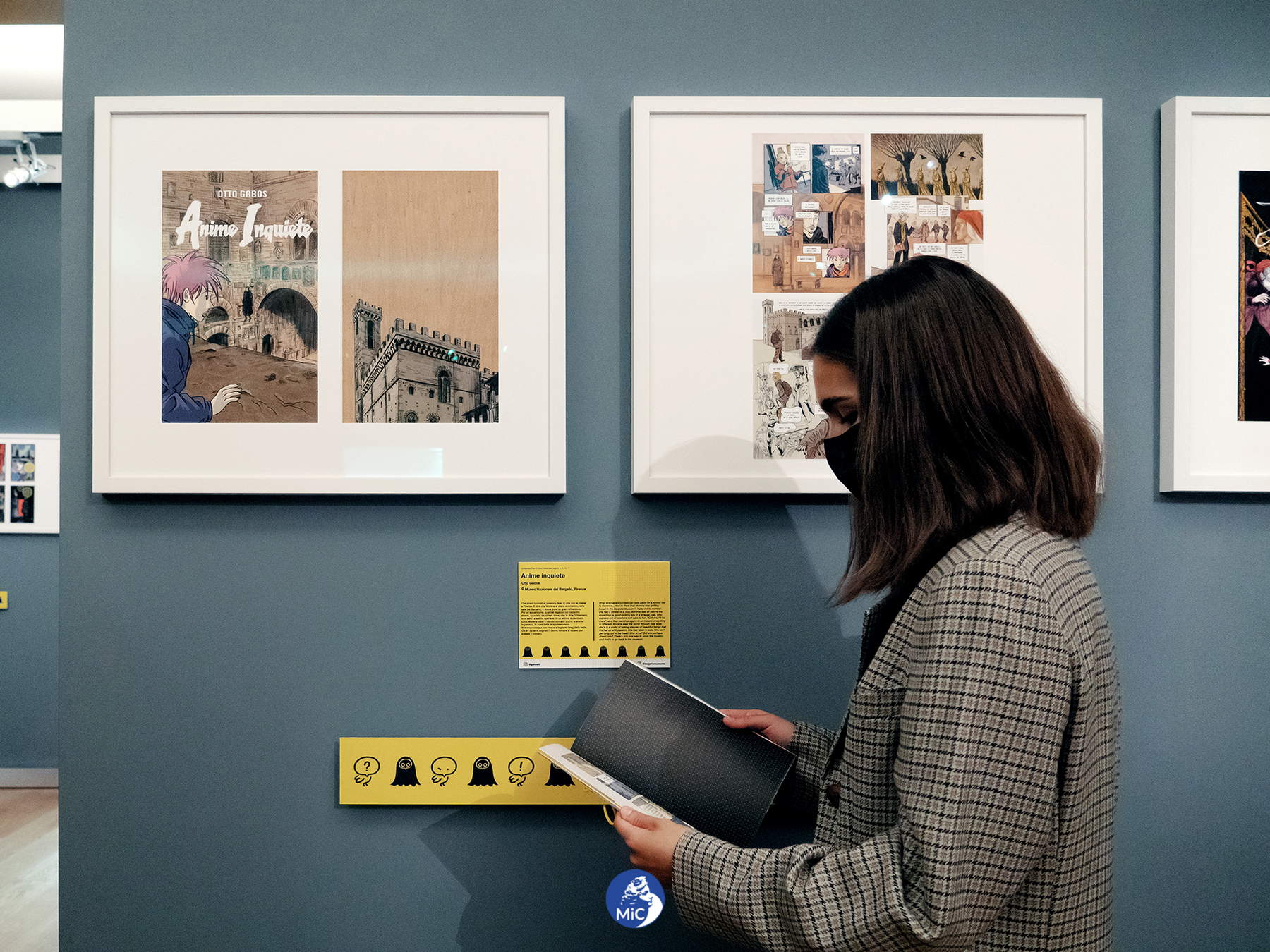 Comics in
Comics inSo how will the project continue? Is there already a plan to expand to other museums, not necessarily state museums but also municipal, private... ?
We are going ahead with the third edition which, for the first time, will feature other institutional entities and not just museums. In particular, I am really happy about the registers that will be made in two MiC institutions in Sicily, which, being a Region with a special statute, does not host museums under state jurisdiction and was therefore the only one that did not have its own register. It will soon have as many as two, one set at the State Archives in Agrigento and the other at the State Archives in Palermo. By the way, in this third edition, there will also be a comic strip by Lorenzo Mattotti, who was awarded at Lucca Comics & Games last year as Grand Master. The third edition will be ready at the end of the year. We said that even from insiders in the comics world there has been a favorable reception towards this project, and the audience itself has reacted very well.
So what are the considerations, reviews, maybe even criticisms that you have received, and what have been the impressions of the readers?
As far as insiders are concerned, the reviews, as mentioned, have been really positive. The publishing house has fielded already established authors, but it has also used the project to offer a new generation of cartoonists the chance to produce their first work, a kind of debut that has meant great growth for these young promises. In fact, this is not a project that includes only big names: also in the next edition we will have together emerging talents and already established masters. This has certainly contributed to the critical success that we also found when we presented it at the main Italian and French comics festivals. Excellent reception has come from the project’s main target audience, the girls and boys who, during visits and on social media, are enthusiastic. There are also museums and cartoonists who periodically apply to join the project.
One last question: what are the projects and campaigns on social and digital that the Ministry is launching?
For the national libraries of the Ministry of Culture we are working with the Experimental Center for Cinematography, we will make some commercials that will show those institutions from another point of view and, above all, products that can make people feel that each library is a world of its own, with its own unique collection. On cinema, we have recently closed the campaign dedicated to the five days with a 3.50 euro ticket, a promotion that will be repeated next spring, and, again on the big screen, several other campaigns are dedicated and ready to go. In addition, since this is really the time for podcasts, we have devoted a lot of attention to this new tool: from Paladine to In good hands to the two brand new series on the ’superheroes’ kept in our museums and on the masterpieces of libraries (soon to be released), there are numerous projects on which we are working in synergy with Chora Media and other realities of the podcast, a particularly effective means of telling the story of cultural heritage. We will then devote specific attention to live clubs: a campaign to promote listening to live music will start soon. An operation launched to revitalize the desire to listen to live music, but also to celebrate the important new norm that, for the first time, has included live clubs among the institutions that will be able to make use of the FUS (Single Fund for Performing Arts). Then we have the aforementioned “In volo sull’archeologia e la bellezza italiana” campaign, which we are enhancing with additional activities, just as we are strengthening the promotion of subscriptions to upcoming seasons in theaters, realities that during the pandemic have really suffered, but which are now on the rebound. The invitation, therefore, is to follow the Ministry on the numerous institutional social profiles including those dedicated to libraries, comics, the portal “culturaitaliaonline,” the newly created profiles dedicated to cinema and entertainment and, new in these days, the candidacy (by the MiC) of the Via Appia in the UNESCO World Heritage List. And for the past year, with @mictok, we have also been on TikTok.
Warning: the translation into English of the original Italian article was created using automatic tools. We undertake to review all articles, but we do not guarantee the total absence of inaccuracies in the translation due to the program. You can find the original by clicking on the ITA button. If you find any mistake,please contact us.